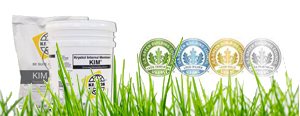The Triple Bottom Line has slightly different wording depending what institution you are speaking with and what country you might live. However, the gist of the language and message attached all mean the same thing.
Also, known as the “Three Ps: People, Planet and Profit”, or the “Three Pillars of Sustainability”, the Triple Bottom Line is a phrase coined by John Elkington and used in his 1997 book: “Cannibals With Forks: The Triple Bottom Line of 21st Century Business”. The Triple Bottom Line measures a company’s economic value, social responsibility and environmental responsibility. He argues that three bottom lines should be measured equally, instead of considering finances solely.
The basis of the Triple Bottom Line with regard to the building industry refers to giving consideration to the three principals discussed in order to achieve sustainable building.
- Social – This aspect of the Triple Bottom Line, referred in the three Ps as ‘People’, takes into account the fair and favorable business a practice regarding labor and the community in which business is being conducted.
- Environment - Also known as ‘Planet’, is the use of sustainable environmental practices and the reduction of environment impact. This aspect takes into account natural resource, environmental management, and pollution prevention come into direct play in regards to air, water, land, and waste.
- Economic – This is also known as ‘Profit’; the economic value created by the company, or the economic benefit to the surrounding community and society. This speaks to profit, cost savings, economic growth, and research and development.
One question you might be asking yourself is, ‘how do you measure the Triple Bottom Line?’ This is certainly an appropriate question considering none of the three characteristics share a common unit of measure. Still, the premise behind the vision stands. A project must look to the three aspects listed in equal measure in order to achieve a sustainable build.
For concrete, sustainability lies mostly in the lifespan of the structure, which requires durable building. One with a short lifespan isn’t good for the environment in that you will have to repair and rebuild, isn't economically viable in most cases and doesn’t meet social responsibility standards. However, those with a long life span, stretching far into the future decrease the amount of construction needed and repairs required, saving the environment from outputs and landfilling. A building that last longest sustain the biggest ‘bang for your buck’, sort of speak, which is useful for the community with which it is built.
To ensure an extended life span for a concrete structure, you must eliminate the influences of deterioration. The leading cause of early concrete deterioration is through water ingress. Moreover, to prevent this from happening, a suitable waterproofing product is needed. A permanent concrete waterproofing solution must be used in order to ensure the Triple Bottom Line can be achieved in projects that involve concrete – which most do around the world.







